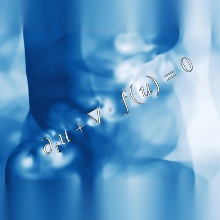Directly to
Team
Principal Investigators:
- Simon Markfelder,
University of Konstanz, Department of Mathematics and Statistics
Project staff:
- Valentin Pellhammer
Abstract
In the past years, results based on a technique called convex integration have drawn lots of interest within the community of mathematical fluid mechanics. While the origin of convex integration lies in differential geometry, it was used for the first time in the field of mathematical fluid mechanics about 15 years ago in order to construct solutions to the incompressible Euler equations. Later convex integration was applied to other fluid models, particularly to the compressible Euler system. The latter is one of the most important examples of hyperbolic conservation laws.
On the one hand by means of convex integration one has learned that for the incompressible Euler equations there is a mechanism which allows weak solutions to dissipate energy. This mechanism is related to turbulent behaviour of the solution. Recently it was shown that a similar mechanism may occur in the compressible setting too. Moreover with the help of convex integration one was able to completely resolve Onsager's conjecture, which reveals under which regularity energy dissipation is possible.
On the other hand convex integration leads to infinitely many solutions in particular for the multi-dimensional compressible Euler equations, even if admissibility criteria like the entropy inequality are imposed. The latter is commonly used in the literature to identify physically relevant solutions. However intuitively at least some of the infinitely many solutions seem to be non-physical. This suggests that weak entropy solutions are not the right solution concept in this context.
In view of these conclusions we work on the following two topics.
Firstly, in order to enhance the mathematical understanding of turbulence, we study statements similar to Onsager's conjecture. Apart from the consideration of the hydrostatic Euler system, we work on an Onsager conjecture for the compressible Euler equations in the context of Hölder continuous solutions. Here the role of the density shall be investigated and to which extent regularity can be traded between momentum and density.
Secondly, we push on with the quest for a good solution concept for the compressible Euler equations in multiple space dimensions. To this end we investigate for which initial data the entropy inequality fails to single out a unique weak solution. Moreover we want to understand why the entropy inequality yields uniqueness in one space dimension whereas in multi-D this is not the case (see above). Finally we study further admissibility criteria and check if they are able to rule out seemingly unphysical solutions.


